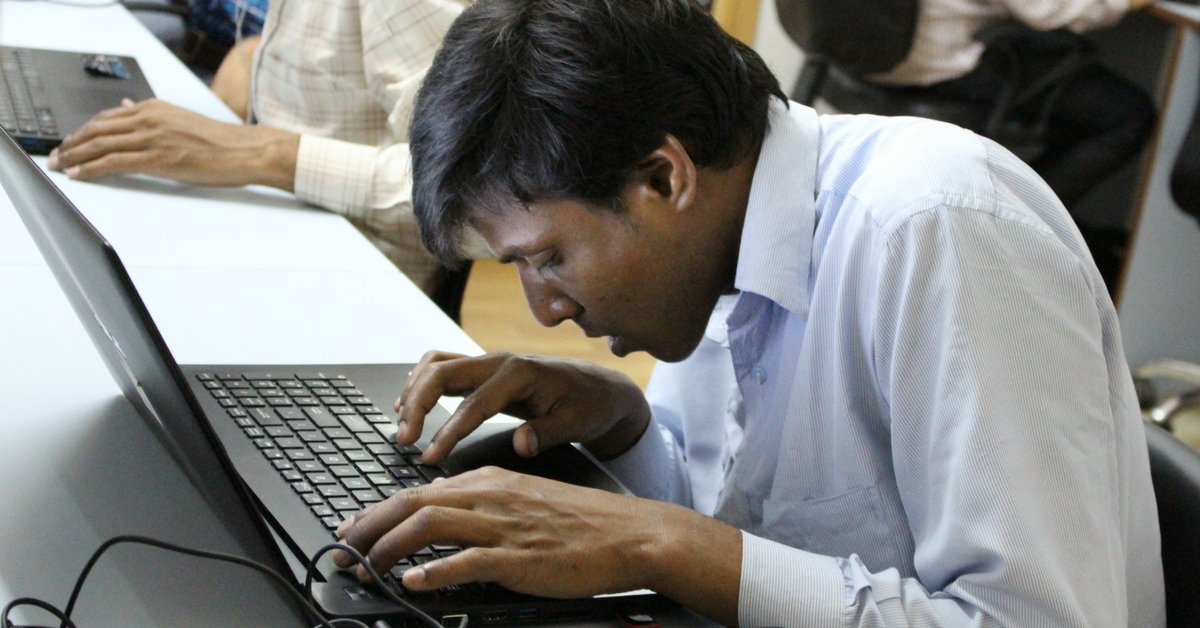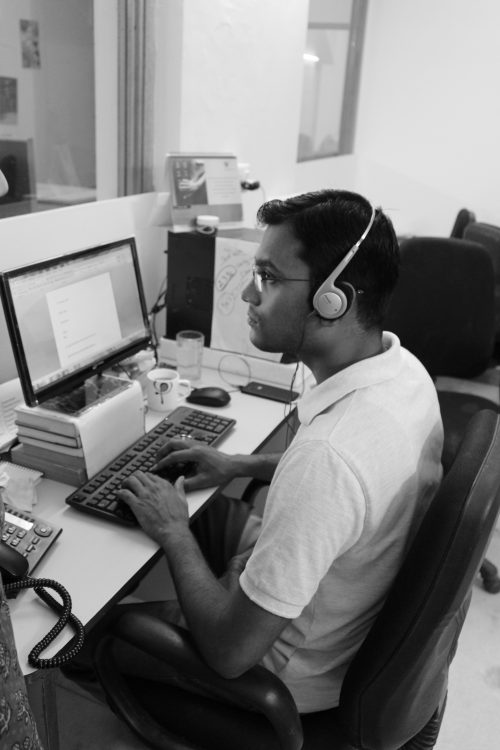TBI Blogs: How the Digital India Movement Is Paving the Way for Inclusion of the Visually Impaired
Digital India is a transformational idea that needs to be exploited beyond its present scope to bring persons with blindness and visual impairment into the mainstream.

Digital Literacy, Digital Divide, Digital Inclusion. These terms are increasingly becoming a part of our conversational vocabulary, thanks to Prime Minister Modi’s flagship campaign, Digital India.
Unlike the myriad schemes announced by previous ruling governments, Digital India is a powerful idea. It’s a transformative campaign, especially so from a blind citizen’s perspective.
Disability is created by barriers that exist in processes and structures. Digital India has the potential to break these barriers.
According to the World Health Organization, people with disabilities are the world’s largest and fastest growing minority group. So, governments across the globe have to consciously start devising schemes and policies that address the needs of persons with disabilities.
Poor accessibility in the past has created a huge divide for the disabled population, pushing them to the margins. They are excluded from mainstream activities and services because of the lack of access.
Digital India can bring them back into the mainstream by creating a bridge of digital infrastructure.

Digital India has become synonymous with growing internet reach, smartphones, and computers. Mobile computing and devices and other new technologies are emerging as “enablers” for the growing disabled population.
But before we talk of infrastructural bridges and enablers, there is a perceptional alteration to be made regarding blind people. When we think of blind people, we instantly picture people with dark glasses and white canes, usually being led on by someone sighted. We seldom think of a person sitting and working on a computer with a pair of headphones on, or a person reading a book using an audio device.
Before we expect the benefits of schemes like Digital India to extend to the blind population, we need to widen our purview of people with visual impairment. We should be able to perceive possibilities that exist for persons with blindness.
Technology, and the expanding digital world, has made it possible for persons with visual impairment to cross the boundaries of confinement and enter the mainstream. Access to assistive technology-enabled devices and the internet makes it possible for blind people to function independently and avail various services on their own. It also opens up a huge arena of employment opportunities for them. With voice-over-enabled smart phones, screen reader-compatible computers, audio books, etc., blind people find themselves capable of coping with sighted peers.
There are several accessible apps that are making lives easier for blind people. For instance, the Uber app enables a blind person to independently hail a cab. The Paytm app allows him/her to make the payment to the Uber cab driver, or any other vendor who accepts digital payments.
Similarly, the ICICI net banking app lets blind people access internet banking on their phones or computers.

Twitter and Facebook apps are making it easy for people with visual impairment to access social media accounts. Apart from apps, technological innovations like screen readers, OCR (Optical Character Recognition) devices, magnifiers, etc. also open possibilities of digital inclusion.
Today, there are successful blind professionals working in IT, banking, hospitality, legal, human resources, and accounting streams. They are able to perform their respective job functions independently with the aid of assistive technology. When it comes to accessing financial services, or booking travel and transport, one cannot expect them to depend on their sighted counterparts. Accessibility through various services and apps can enable them to function on their own, leaving them feeling empowered.
Service providers and the government need to take into account the varied needs of persons with visual impairment. Issues should be addressed and accommodated at the inception stage, rather than being added later as retrofitting.
If programmes, schemes, and initiatives are designed keeping in mind the visually impaired population, barriers could almost cease to exist. Let’s take the recent example of the demonetization drive. Demonetization has made room for a new digital cashless economy. This involves payments and transactions through e-wallets, internet banking, debit and credit cards, and so on. The Bhim app is being heavily promoted by the government for financial transactions, but it has a lot of accessibility challenges from a blind person’s perspective.
Earlier, banking – as an industry – focussed excessively on paper. Every transaction involved a paper trail. But after demonetization, the government has initiated a switchover to digital, with more e-payments and cashless banking options. Blind people see this as a huge opportunity for financial inclusion, to transact independently if accessibility features are in place. For instance, without a Captcha, internet banking becomes smooth and independent.
Some e-wallets are fully accessible, and blind people can use them to transact wherever possible.

The switch to Digital can actually become a boon for blind citizens, because they can access services independently with the help of computers and smartphones. As the interface between service providers and end-users turns digital, banking apps, taxi and other transport apps, navigation apps, etc. can all be accessible with the click of a button or a voice command.
Dependence on another individual can go down if all these services become digitally accessible to the blind. But again, it is essential for the government to ensure that apps, services, and websites are accessible. The developers of these digital services should understand the needs of the visually impaired end-user, so there are no limitations in terms of access, and no hiccup points in the process either.
Several service sectors like banking, hospitality, transportation, travel, etc. can join the Digital India bandwagon and widen the scope of their services to reach an additional section of the population—the visually impaired citizens.
Inclusion can become a reality with proper implementation of Digital India. Digital inclusion can pave way for overall integration of the visually impaired population into society. After their inclusion, civil society and the government will become sensitive to their needs, and incorporate the same in future legislation and initiatives.
Help Eyeway reach out to more disabled people across the country and create greater impact by donating here.
Like this story? Or have something to share? Write to us: [email protected], or connect with us on Facebook and Twitter.
NEW: Click here to get positive news on WhatsApp!
This story made me
- 97
- 121
- 89
- 167
Tell Us More
We bring stories straight from the heart of India, to inspire millions and create a wave of impact. Our positive movement is growing bigger everyday, and we would love for you to join it.
Please contribute whatever you can, every little penny helps our team in bringing you more stories that support dreams and spread hope.



















